Roses "New Jersey": features and care
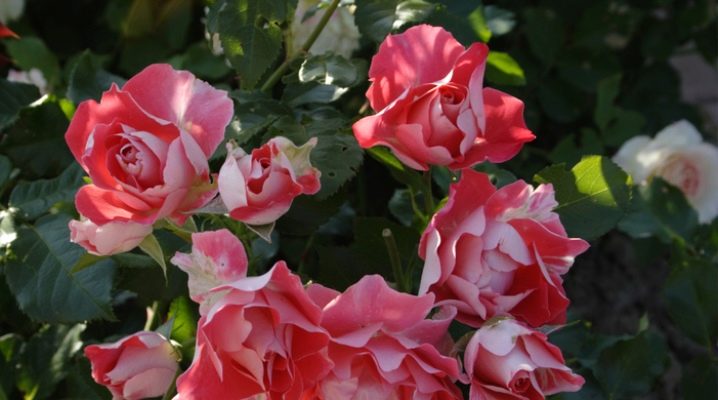
"New Jersey" is not only the name of one of the states of the United States, but also a variety of hybrid tea roses that are quite popular among gardeners in our country. It will surely become a real decoration of any summer cottage or local area. Powerful shoots with lots of foliage are often used by landscape designers as elements of compositions. Such flowers look very unusual, as they have a two-color color of the petals. It is not easy to grow "New Jersey", but with all the efforts made, the variety will thank you with incredibly lush and colorful flowering, becoming a bright accent of landscape design.


Description
Bushes "New Jersey" are about 1 meter high, about half a meter wide and exude a rich aroma of buds. The leaves are glossy, dark green in color, and the petals are distinguished by an unusual two-tone color. Flowers "New Jersey" are red-yellow, densely double, have up to 50 petals per bud, which can reach 7-8 cm in diameter. Such roses have a special charm during their abundant flowering. Such picturesque flowers (red at the edges and yellow in the middle) will surely attract the attention of many neighbors to your site. Since the yellow tint smoothly spreads only to the inner side of the petals, it seems that they are inside like red-hot coals.


Roses of this variety are used by summer residents and landscape designers both for landscaping in group plantings and in the form of single bushes.
Growing a rose on a stem is one of the most popular design options in the garden. Stamp roses are a form of a plant that is obtained by grafting a rose onto a rose hip stem. Also, such colorful and fragrant flowers are great for cutting. In this case, for longer storage, you can simply add citric or salicylic acid to the water with roses.
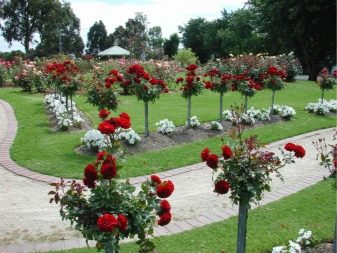

How to choose?
When buying seedlings, trust only specialized sales centers and trusted suppliers. Purchasing rose seedlings on the market from random sellers is of course worth avoiding. Please note that the sale of this variety is usually carried out by private breeders, therefore, a high percentage of re-grading is observed in the free sale, and sometimes the culture does not correspond to the main characteristics of the variety.
Of course, as an option, you can grow roses yourself from cuttings or grafted onto rose hips. For many experienced gardeners, getting such unique varieties with their own hands has become a kind of hobby.
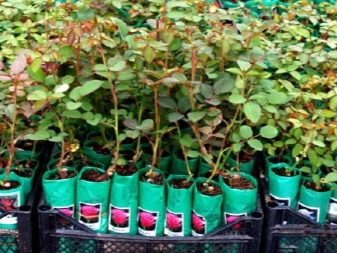

Seedlings can be sold with both open and closed root systems. In any case, most varieties need special storage conditions. Therefore, many shops and garden centers sell seedlings with a closed root system and already with soil. Until planting in open ground, the plants will need a cool content, so if you do not have enough knowledge or conditions for overexposing roses, it is best to postpone their purchase until late spring in order to plant flowers immediately after purchase.
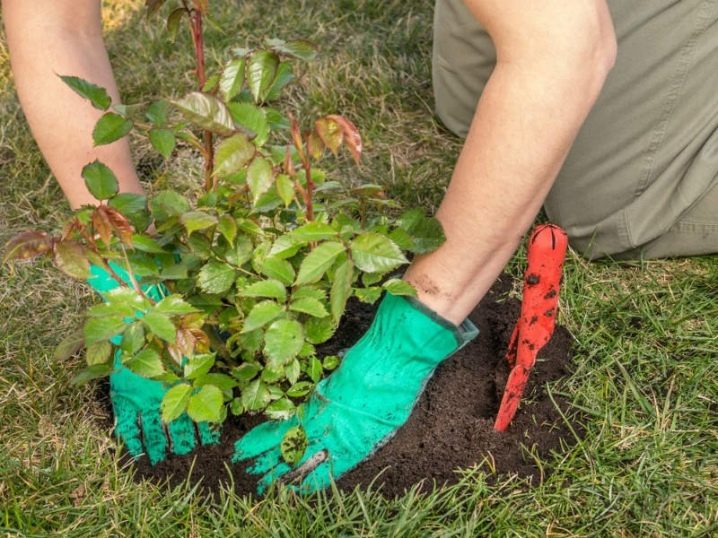
Many garden centers often sell roses in cardboard boxes in spring. Unfortunately, inside is often not soil, but sawdust. And if the plant stands at room temperature for a long time, the vegetation process begins. This means that if the rose displayed in the salon was not bought in the first week, then later it becomes unsuitable for planting and can easily die in the future.But if the sprouts stick out of the box by a maximum of 3-4 cm, it will be much easier to save the seedling.
If the sprouts are much longer, then buying a rose is useless, you just waste your money. In the case of the presence of small sprouts, it is clear that the accumulation of nutrients has begun in the roots and stems - you can buy such a seedling without fear of losing it.
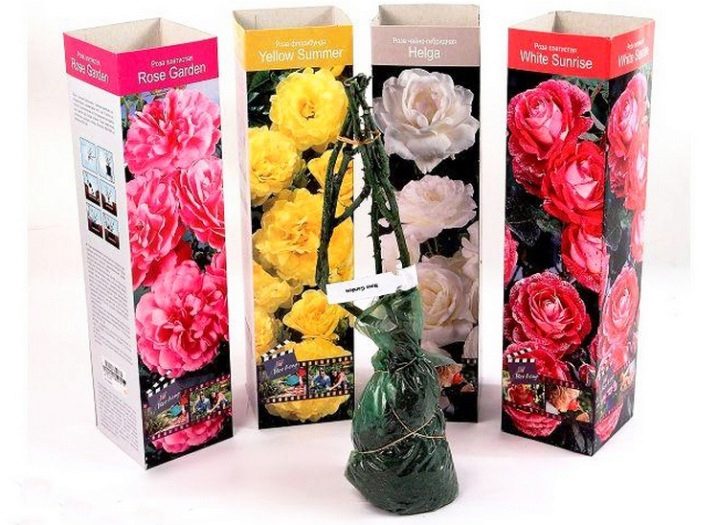
Landing
Since the New Jersey rose is very demanding on growing conditions, when choosing a planting site, it is worth staying on the southern side of the site, preferably closed from the winds and additional influx of cold air by buildings or other plants. The soil should be loose and at the same time slightly acidic. Alkaline soils are poorly suited for cultivating this variety of roses. The presence of organic elements such as peat and humus in the soil does not hurt either. To do this, when planting, be sure to add 1 bucket of humus per 1 rose bush.
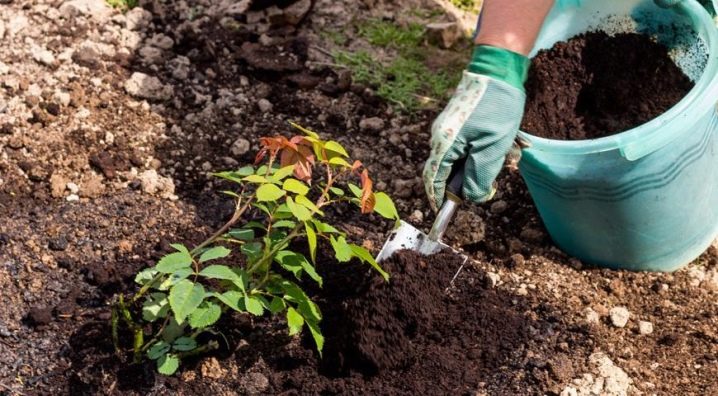
Before planting a rose in the ground, you need to immerse the roots in water, where a root formation stimulator has been added. The planting pit can be made in a standard size (about 40 cm both in depth and in width). The bottom of the hole is loosened by adding fertilizer to the soil.
Next, we immerse our prepared seedling here in a mixture of manure and clay. We fill the trunk with earth, compact the soil, and then water the seedling. And in order to additionally retain moisture, it is better to spud the rose immediately after watering, for this it will be enough to make an earthen embankment at a distance of about 25 cm from the bush.

Care
"New Jersey" is a rather capricious variety and does not take root in poor and infertile soil. They also do not like these cold snap roses and overly waterlogged soil. To still wait for abundant flowering, summer residents will have to strictly follow many important rules of care. Changes in humidity can negatively affect the change in the appearance of the buds. For example, when the earth dries out too much, they become small and gradually lose their unusual aroma. And the bush itself sheds foliage, which negatively affects the decorative properties of the plant.

The variety needs regular feeding. In the spring, nitrogen fertilization is also worth making. 40 g of potassium nitrate per plant will be enough. And during the growth of the leaves in the bushes add up to 15 g of nitrate or urea, dissolved in water, it will be enough to feed the plants with this composition once a week. In the summer, top dressing is supplemented with potassium, for a bucket of water you will need 50 g of urea, 20 g of saltpeter and potassium salt each.
After blooming roses, much less fertilizer is required. And in the fall, magnesium and phosphorus are included in top dressing. At the same time, alternating with droppings dissolved in water will make the bushes stronger and healthier.
Do not forget that all dressings should be applied in a dissolved form, so as not to burn the plant roots.
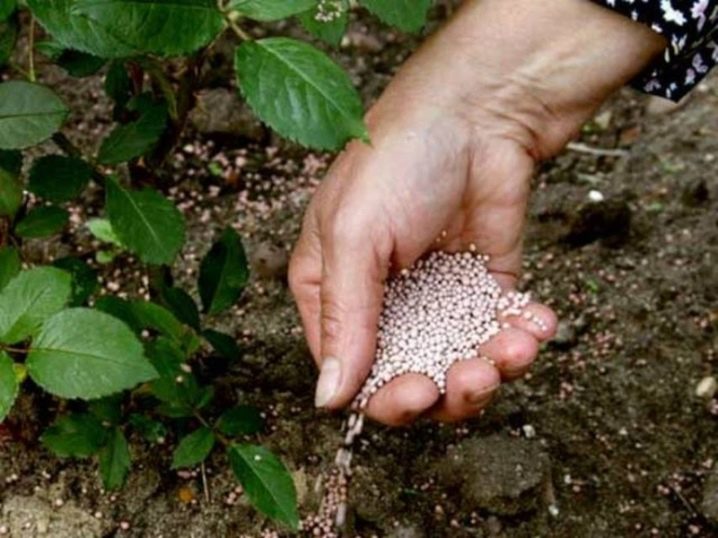
Of course, do not forget about abundant and regular watering. In a particularly warm season, it is carried out 2 times a week, the rest of the time it will be enough to water a capricious rose once a week, and in rainy time, of course, watering is not needed. Also important is "dry watering", more precisely, regular loosening of the soil so that oxygen reaches the roots, and the plant develops better. In the fall, it will be enough to water the rose twice a month.
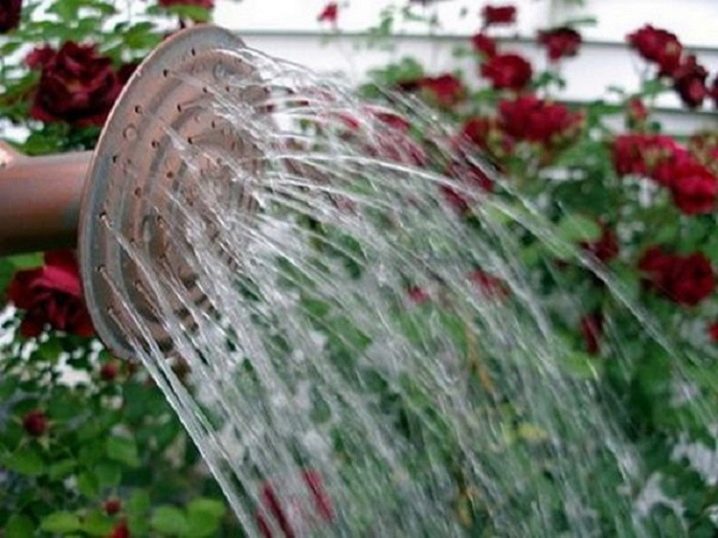
How to trim correctly?
Plants of the New Jersey variety need high hilling for the winter, and pruning in the spring. This is an important point in growing roses that must not be overlooked. It is important not to miss the moment and carry out the pruning before the growing season. To do this, a few buds are simply shortened with a pruner. In the first year, pruning is done by 2 buds, in subsequent years - by 5. The cut is made 1 cm above the outer kidney.
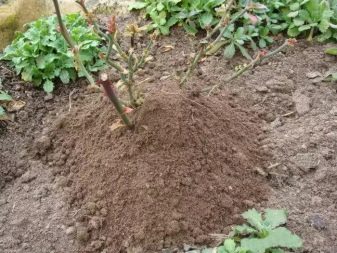
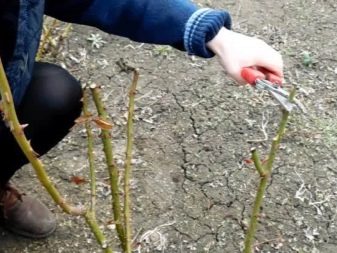
If in May the roses throw out shoots, their tops are pinched. This is done in order for the bush to branch out as best as possible in the future. Pruning can be done in summer to allow the plant to bloom again profusely.
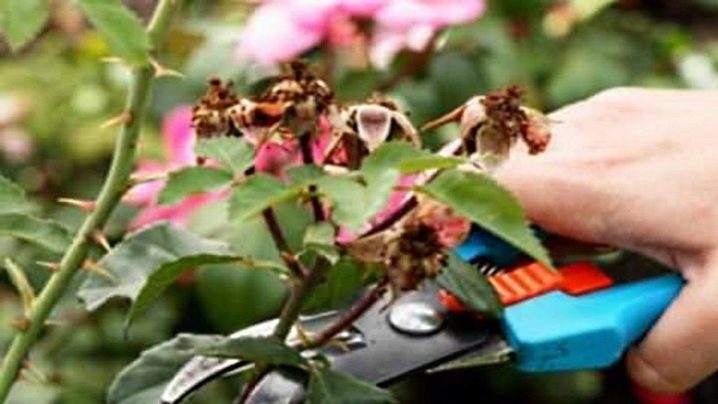
Please note that when cutting roses (for example, to form a bouquet), you need to remove 1-2 peduncles, but not more, otherwise the flowering will be significantly weakened in the future.
In the fall, the time for pruning roses is usually the end of October. It is worth removing unblown or dried buds and diseased, damaged and dry shoots, which, if left on the bush, usually become a source of all kinds of diseases in the future. After pruning, the bushes are insulated with spruce branches, and the base is covered with peat. And in the cold northern regions, roses will need shelter when a homemade box with some kind of natural insulation is installed on the bush.
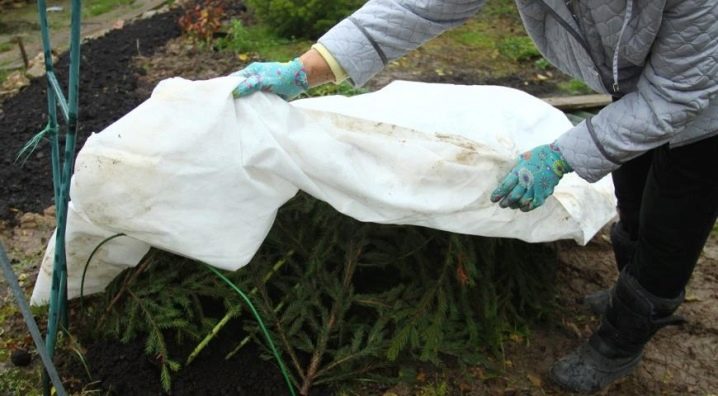
Examples in landscape design
- Since the yellowish tint is on the inside of the petals, and on the outside they are bright red, it seems that the petals are like hot coals.
- Roses, no doubt, will become a real decoration of any garden area or local area.
- The planting pit can be made in a standard size (about 40 cm both in depth and in width).
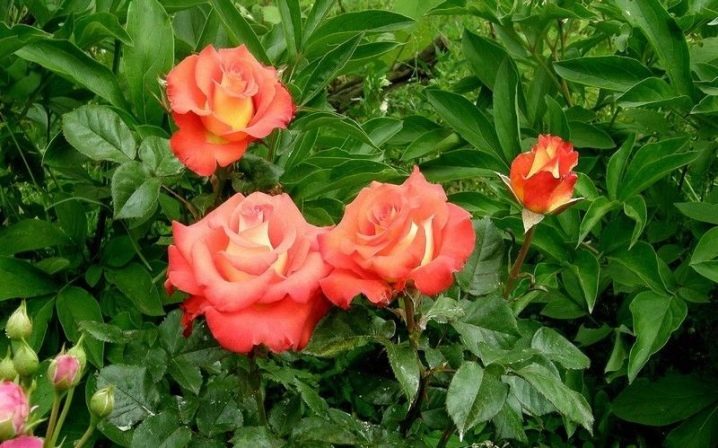
For information on which roses to choose for planting in the garden, see the next video.

































































































The comment was sent successfully.